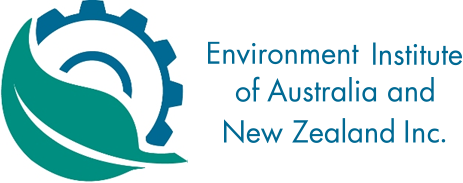-
Member Login
- Home
- About
- Institute Groups
- Membership
- Events
- News & Publications
- Institute Programs
- Resources
- Jobs Board
- Contact Us
- Site Info
Impact assessment in the context of uncertainty and risk
The symposium for impact assessment (IA) practitioners and researchers: 'Doing impact assessment in the context of uncertainty and risk' was held on 20-21 February this year, attracting 36 professionals, practitioners and academics working in the IA area during the two days.
Day one involved five sessions:
- State of IA in Australia
- Social and economic IA in uncertainty
- Lesson from research
- Lesson from case studies
- Discussion and how we better do impact assessment in the context of uncertainty and risk.
Day two was aimed primarily at IA academics and researchers, and had two sessions:
- Teaching IA.
- Research round table.
Presentations are available here >
The presentations generated considerable discussion, and a document has been prepared to give full details of those discussions. You can download that document here >
The discussions on day one focused on five key questions:
- Doing a first cut of Social Impact Assessment (SIA) Guidelines
- The extent to which SIA can be integrated into EIA
- Learning and feedback – what have we learnt in 48 years of IA and how do we do better?
- Cumulative impact assessment – doing it better in EIA and what do we need to do?
- How do we better deal with scientific uncertainty?
On the first point, there was general support that having a set of SIA Guidelines would be useful and encourage better practice. A common set of guidelines that apply to all Australian jurisdictions was preferred rather than separate ones. Rather than ‘re-invent the wheel’, a starting point should be to review and build on any existing Guidelines – for example the draft NSW Guidelines, IAIA Guidelines and many local governments have developed their own guidelines.
On the second point, it was generally agreed that SIA will remain a separate process to EIA. However, an SIA should be run in parallel with the EIA. Consequently, a coordinated approach is needed between the agencies and officers carrying out the SIA and EIA.
On the third question, it was agreed that it’s critical that information generated and captured in EIAs and SIAs should be shared in a publicly available format and medium. Some key barriers to this were identified that worked against ongoing learning. As well, some suggestions were made that, as professionals, we can help in facilitating learning by providing feedback. Finally, it was noted that the existence of strongly top down approaches in IA and a focus on efficiency has come at a price for effectiveness.
On the fourth question, it was agreed that the best stage of decision making to address cumulative impact assessment is through strategic planning and, therefore, strategic environmental assessment, which should include setting thresholds of acceptable impacts. Project EIA could also be used to address cumulative impacts, but it would mean that each project needs to be set within a regional context, and cumulative impacts should be a requirement in the preparation of proponent EIS documents. Finally, offsetting could be used where a cumulative impact threshold is exceeded, but it would need to be directly related to that particular impact.
On the last question, a number of options were identified that could address this issue including: collect more data; carry out scenarios modelling; having risk assessment carried out by an independent expert; and, applying proper project adaptive management.
A key point of contention will always be around what impacts are acceptable and what level of uncertainty is acceptable in decision making in EIA. It was noted that the precautionary principle is usually invoked in cases where there is uncertainty, but better specific guidance needs to be provided in its application during EIA. A related problem is that scientists and practitioners are very poor at explaining to the public what is risk and how uncertainty is dealt with. The public often has a zero tolerance to risk which is unrealistic in decision making.
The two key outcomes from day two were:
- There is merit in developing a community of practice of teachers, trainers and mentors in IA.
- There seemed to be a disconnect between research and practice – both ways.
A proposal was put forward to set up and promote a community of practice of teachers, trainers and mentors in IA.
It was agreed that a useful piece of research that could be done would be to investigate the challenges facing practitioners and what are their key research needs and it was agreed to develop this and, hopefully, report on the outcome of that research at the gathering of IA people in Melbourne next year.
We acknowledge and value the rights and interests of Indigenous Peoples in the protection and management of environmental values through their involvement in decisions and processes, and the application of traditional Indigenous knowledge.

